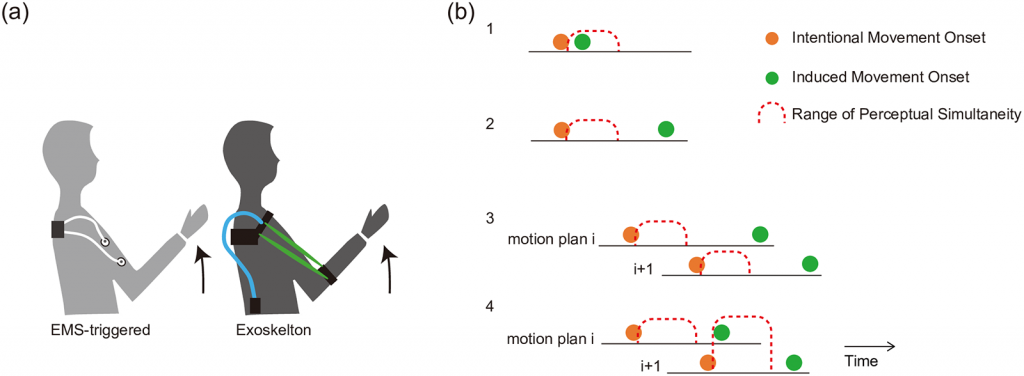
When human movement is assisted or controlled with a muscle actuator, such as electrical muscle stimulation, a critical issue is the integration of such induced movement with the person’s motion intention and how this movement then affects their motor control. Towards achieving optimal integration and reducing feelings of artificiality and enforcement, we explored perceptual simultaneity through electrical muscle stimulation, which involved changing the interval between intentional and induced movements. We report on two experiments in which we evaluated the ranges between detection and stimulus for perceptual simultaneity achievable with an electromyography-triggered electrical muscle stimulation system. We found that the peak range was approximately 80-160 ms, with the timing of perceptual simultaneity shifting according to different adaptation states. Our results indicate that perceptual simultaneity is controllable using this adaptation strategy.
プレスリリース: 人間と機械の協調的な運動の設計に有用な手がかりを発見
~機械の適切な支援のタイミングの同定と人間の知覚の順応現象の応用可能性~
https://www.rcast.u-tokyo.ac.jp/ja/news/release/20200813.html